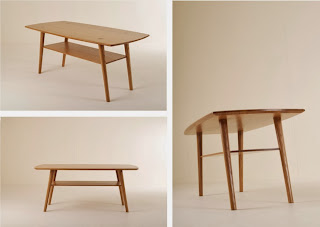A decent set of tools is key to any trade, none more so than furniture making. The intention isn't to give you a comprehensive list of tools because it could go on for pages and is dependant on what projects you'll be working on. Instead we've chosen to concentrate on the holy trinity of woodworking tools: planes, chisels and saws. Every woodworker has their favourite set of tools and we're not likely to agree on every detail, so here are some of our favourites; they represent quality and value for money. We've compiled a list of the tools available from
Amazon; not all of those shown below are included but we've added a few variations to make the
list worth a look.
Planes
There are very few projects that don't require any hand planing. Even working in MDF, that most machine friendly of materials, calls for the odd bit of tidying up with a small plane. If I had to choose only two planes I'd choose the following:
Block Plane
A small plane for one handed planing of edges and for surfaces too small to comfortably rest a larger plane on; the low angled version is particularly suited to planing end-grain surfaces.
N°5 or 5½ Jack Plane
A general purpose plane that can be used to prepare surfaces for edge gluing or finely set for use as a smoothing plane for surface preparation prior to applying a finish.
( For a more comprehensive description of what each type of plane is for, check out what
Matthew at Workshop Heaven has to say on the subject.)
There are many second hand planes for sale on Ebay; mostly old Stanleys and Records. These planes are in the main perfectly fine for planing MDF or softwood, but not really up to the job of planing hardwood. You could buy one and spend a day truing the base, and filing the frog to make it all work better and buy a better blade, but I'd recommend you spend your money or someone else's on the offerings from
Quangsheng. I don't get any form of commission for recommending them, I just like them. They need only minimal preparation and they have a host of well engineered features that puts the current crop of Stanleys, Records and Faithfulls in the shade. In short these are planes that don't get in the way of you being able to produce your best work. Quangsheng N°5s can be bought for around £130 which may sound expensive, but when you consider you'll need to spend nearly twice that to obtain a British
Clifton, American
Lie Nielsen or
Canadian Veritas then they represent very good value for money.
 |
| Quangsheng N°5 |
A notable mention goes to German distributor
Dictum whose own
planes are excellent and worth looking at as an alternative to the Quangsheng in both quality and price.
A Set of Bevel Edged Chisels
It is quite hard to find a truly useless set of new chisels today, as the quality of the steel available seems to be pretty much decent all round.
Narex make a very nice set for not a lot of money. I have a minor quibble about the electro brassed ferrule but apart from that they are decent and deserve a place in your tool kit.
I have a liking for the
Ashley Isles bevel edge range. They're more expensive, but beautifully finished and feel comfortable in the hand. Well my hand anyway.
Saws
Woodworkers like to argue about saws more than any other tool, partly because we like a good debate but also because it reflects much about how we like to work. There are currently two camps slugging it out: those that favour a traditional saw which cuts on the push stroke and those that prefer
nokogiri or Japanese pattern saws that cut on the pull stroke. There are pros and cons to each type of saw:
Japanese saws are easier for the beginner to use because the blades are thin and pulling the saw towards you is a very relaxed way to saw. Their downside is that they are often better suited to softer timbers as the teeth can break off when cutting particularly dense species. It's worth asking the retailer if the saw you have in mind has been designed to cut hard timbers.
 |
| Dozuki |
Western saws are heavier than their Japanese counterparts; they have to be because they are pushed rather than pulled; the blades are much thicker too. Beginners often struggle to work in a relaxed way and find themselves exhausted after a short while. My theory on this is that most western saws are filed with cross cutting teeth, which give a smooth but slow cut. My preference is to use a saw that has been filed to a rip pattern, which as far as I can tell, cuts as efficiently across the grain as it does with the grain, without a disastrous increase in tear-out.
 |
| Lie Nielsen Tenon saw |
There are quite a few rip pattern saws on the market but most of the
brass backed types sell for around £130.
Veritas has a modern take on the traditional tenon saw which I like very much and retails for about £37.
 |
| Veritas Carcass Saw |











